|
|
|
|
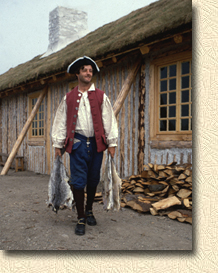 |
Georges Cyprien Briand was born in Louisbourg, Port Toulouse, on November 7th of 1748. At his 10 years old he is deported to France with his family by the Englishmen. After living 6 years at La Rochelle, France, they come back to America in 1765, at Saint Pierre et Miquelon, which is restored as a French territory, in North America. They settle ground at the Isle of Miquelon. At his young age he learns the trades of marine and ships' carpenter.
|
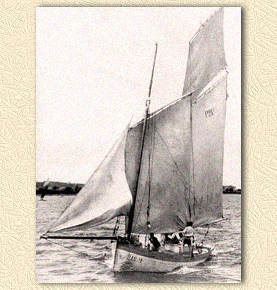 |
|
On February 14th 1770 Georges Cyprien was married at the Church of Nôtre Dame des Ardilliers, in Miquelon, with Anne Dugas, born in 1743 in Grand-Pré, French Acadia (today it belongs to Kings, Nova Scotia, Canada), daughter of Abraham Dugas and Marguerite Le Blanc. On February 20th, 6 days later, was married in that Church his brother Jean with Rosalie Gaudet. Nôtre Dame des Ardilliers> |
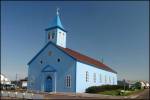 |
|
Georges Cyprien and Anne Dugas had in Miquelon 4 children: Anne-Marguerite (17-4-1770), Françoise (1772), Lisette (23-4-1774) and Georges Fabien (1776). |
|
In a Census of 1776 of Miquelon are recorded: Georges Cyprien Briand, 29 years Anne Dugas, his wife 29 years Anne, his daughter 6 years Françoise, his daughter 4 years Louise (Lisette), his daughter 2 years His familiar assets were: 1 house - 1 chaloupe - 1 grave (1)- 1 magasin (2) - 3/4 of one chaffaud(3) - 1 wary (4) - 3 beasts with horns. (1) Extension of stones for drying the cod. (2) Warehouse. (3) Tables made with rough wood for preparing the cod after being fished. (4) Boat.
|
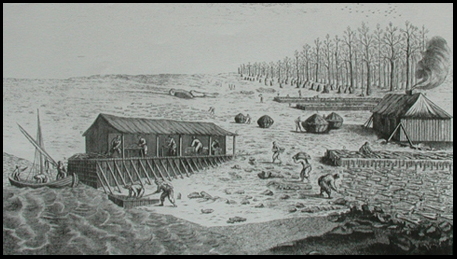 |
|
The main bussiness for the Saint Pierre et Miquelon inhabitants at the XVIII Century was the capture and trade of cod fish. It was administrated through concessions given to the fishers, and they were supplied with appropiiated lands for the task. After the cod was captured, they clean it up, removing the innards, and it was set on "graves", which were extensions of stones operated by the "graviers". The next step was to cure it in salt and to stock it, for being exported to France. |
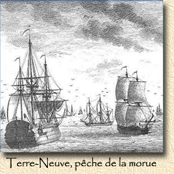 |
THE XVIII CENTURY IN SAINT PIERRE ET MIQUELON: The winter at the islands is long and very cold. In winter the temperature goes down to -15 F, and in summer the hot doesn't go up more than 70 F. The snow starts to fall down at the middle of November, and the sun comes shining through back on April or May. When the North or Northeast wind blows, storms named "poudrin" appear; they are snow storms. The area supports large colonies of seals, whales and a very rich fauna of fish species . The confluence of the cold Labrador Current and the warm Gulf Stream creates the best environment for the life at the ocean. And it also leads to a permanent fog covering the islands' horizon. Due to the intense cold, the houses ever had a "tambour", a "drum" (see picture at right) to protect them of the cold weather. The houses were always built in wood, which is appropriate to keep the warm, but dangerous because of the fires. Since the XIII Century ships with Basques, Britton French and people from North Europe came over to fish at the Grand Banks of Newfoundland. It was the major zone of cod fishing in the world. Once the first French colons started to settle on the islands, organizing the villages and the fishing industry on the coast, France received interesting incomes from that exportation. The colons received in concession the "graves" (cod fish dryers) and they used to build their houses on the adjacent parcels of land. They also had their farms, with some animals. The fishing journal lasted almost the whole day, since the beginning until the nighttime, and as it was always an adventure to penetrate the glazed waters of the Grand Banks, it was ever colored with kisses and farewells. They watch the wind, they consult with the ancient fishers. They'll have to face the fury of the ocean, the mysteries of the frozen Grand Bank, they must fight with bravery for surviving. They were that kind of men prepared to confront all the perils, to emerge triumphant before any circumstance. |
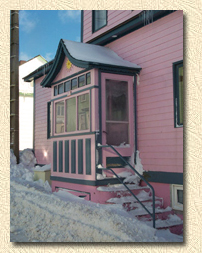 |
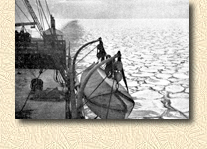 |
| 1778: Deportation of Acadians from Saint Pierre et Miquelon | |
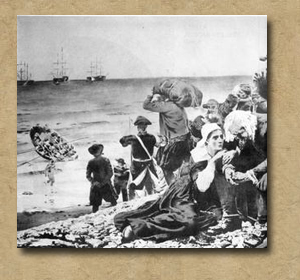 |
In 1776, France helps the United States in the Independence War. The French General Lafayette fight for the Americans, and all the American corsairs are sheltered along the coasts of all France. As a response, on September 14th 1778, an English squad with 5 frigates and 140 canons, under the command of Admiral Montague, arrives to the bay of Saint Pierre and occupies the French territory isles, burning the inhabitants' houses, destroying their ships and confiscating their cattle and their goods. Around 1300 acadians are deported in several vessels to France between September and November of that year. Georges Cyprien is embarked with all his family in the vessel La Jeannette, and they arrive to Saint Servan, St. Malo, on November 6th 1778. On June 14th 1779 was born in Saint Servan his fifth child, On March 2nd 1783 was born in Saint Servan his sixth child, Sophie.
|
|
1781: A French Marine's record, (Les Marins Acadiens) identifies him as 2eme.Capitaine du Brigantin Corsaire “Le Tartare”, in 1781, Register of Commerce No. 247. The Brig, armed with 12 canyons and with 2 howitzers, the chronicle says, was prisoner of the English on February of 1782 by the Frigate “Larethose”, and conduced to Portsmouth. |
Corsair Brig "Le Tartare" |
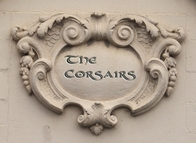 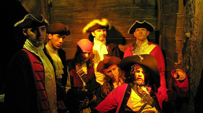 |
Also named privateering, it was a naval strategy (corsairs was also named privateers), which consisted in to outfit private vessels, in times of War, with proper armament, and authorized by their Sovereign, to send them in commission to attack and seize cargo from another country's ships. For being able to be a privateer or corsair, was necessary a royal authorization named "Letter of Marquee". This document was important not only for the loyal authorization given by it, but mainly because, if being captured by the enemy, corsairs carrying this document were treated like "war prisoners". Corsairs were commissioned to attack and capture booty only from enemies of their Sovereign's ships, not from neutral countries or from their own country. If not accomplishing with this, they would be treated as "pirates" and hanged by the neck. In times of war, privateers ought to pay taxes to the King on the benefits they had selling the captured merchandises, and in times of peace, they were allowed to dispose completely of it. In 1856, many nations was reunited under the Declaration of Paris, (except Spain, Mexico and United States) and they decided the figure of privateers' abolition. Saint Malo was the most important port of corsairs in Europe. |
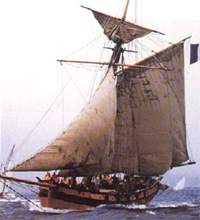 Corsair in Saint Malo |
| LETTER OF MARQUE (LETTRE DE MARQUE) |
Also called "Letter of Course", for the free course the privateers had navigating and kidnapping people and merchandises, this name gave origin to the expression "coursaires" or "corsairs". In Spanish "Patente de Corso", in French "Lettre de Course".
|
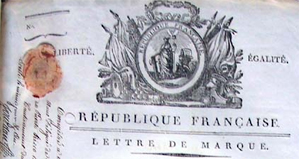 |
|
After being sailing 3 years in the Corsair Brig Le Tartare, in 1783, when by the Treaty of Versailles, Saint Pierre et Miquelon is restored to France, he returned to live at the islands, establishing with his family in Saint Pierre, and they have 2 more children on there: Jean Baptiste (May-16-1785) and Pierre Louis (April-6-1787). On April 19th 1787 dies in Saint Pierre his daughter Sophie, at 4 years old. |
|
Finally, Georges Cyprien died on July 28th 1787 , being 38 years old, in the Hôtel des Trois Hermines, Grande Rue de Capucins, in Nantes, France. His death certificate says that he was Captain of the ship "La Mère de Famille", from the Port of Rochefort. Anne Dugas, his wife, died on September 13th 1845 at Brest, being 102 years old. His siblings Célestin, Joseph, Nicholas-François y Jean stayed to live in Saint Pierre et Miquelon.
|
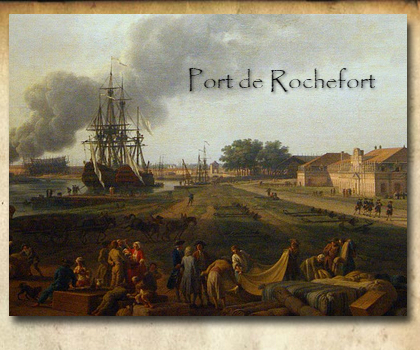 |